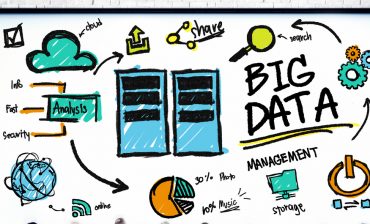
Tata Consultancy Services’ head of their digital software & solutions group talks about how real “real-time” is in your digital transformation journey.
Our “6Q4″ series features six questions for the leaders, innovators, and operators in the real-time analytics arena who are leveraging big data to transform business as we know it.
Q1. In the race to connect with customers and faced with so many data gathering/analysis/decision options, what are the top questions your clients ask when beginning to use this digital intelligence?
They usually ask several questions:
- How do I balance the requirements across the various stakeholders within my enterprise and determine the right priorities for the organization? For example, when you talk to chief operating officers, they want to drive efficiencies in operations. When you talk to someone in marketing, their priority is to get enough intelligence to drive targeted campaigns. And chief customer officers want to equip front-end personnel with precisely the right customer information.
- When can I see the return on investment? Digital transformation initiatives require significant investments. To gain confidence, many enterprises start small so they can build confidence before investing in broad-based initiatives.
- Can you help future-proof our digital strategy?
- As a global organization, what are the IT architecture implications when designing for GDPR or other privacy laws such as the one in California going into effect by 2020?
Q2. Smart cities are part of your focus, too. What special challenges do you see in bridging that private/public gap in needs, between your IUX (Intelligent Urban Exchange) and CI&I (Customer Intelligence & Insights) software products, for example?
If we look at the two domains, CI&I enables enterprises to keep customers at the center of everything they do and IUX allows cities to keep citizens at the center of urban initiatives. Both of them work to deliver superior experiences to their constituents. Given the synergy, we built our portfolios on a common platform called the Connected Intelligence Platform.
Why did we choose these two portfolios? People transact with businesses in the context of where they live – such as a city. Collaboration between enterprises and cities will become more and more important as enterprises develop new ways to interact with their customers, citizens, and visitors in real time. Consider the notion of city commerce. When there’s a football game in the city, retailers close to the venue may want to take advantage of the event by attracting fans to their stores through targeted offers. This would boost revenues for local merchants and increase tax revenues for cities. When it comes to smart cities, while it’s important to focus on traditional urban domains such as parking, transportation, and lighting, city commerce is a promising but untapped opportunity. This is where we see an intersection between our two portfolios.
Q3. For consumer-focused clients looking for better engagement, they’re usually building on some kind of client relationship platform (an app, a social media presence, a loyalty program) that may be somewhat static. How do they get ready for “real-time?”
There are three basic steps needed to get ready for taking advantage of real-time data.
Enterprises must first agree on what real-time means, what data they need in real time, and what data sources they should use.
Once they’ve nailed the meaning of real-time and clearly formulated the requirements for real-time analytics, the next step is to formulate the supporting architecture. It will need the ability to process data at very high speed (depending on the data source it can vary from milliseconds to minutes). The architecture must also be able to deal with spikes in data volume and scale up as data grows.
The third step is to align internal processes. There is a reason why enterprises are implementing real-time analytics. Perhaps they aren’t satisfied with how their internal processes are running. Let’s say you’re a manufacturer suffering from lengthy equipment repair times. Breakdowns are always unexpected, but your maintenance team often spends hours identifying the problem, only to discover they don’t have the replacement part to fix the machine.
Using real-time analytics, the requirements for the maintenance team’s operation will definitely change. The enterprise will expect faster fixes as well as preventive maintenance based on the data gathered. To make the most of the analytics solution, an enterprise should revise existing maintenance processes, key performance indicators, and job descriptions.
Q4. Often data-focused enterprises think in terms of partnerships that may be on-going or project-focused with a limited scope. How do you find they approach building a new digital ecosystem?
We recommend enterprises define a strategy that enables them to own the journey of their customers. Owning the journey starts with understanding each customer — their individual preferences and behavior — and having the ability to engage them with the right offer at the right time through contextual recommendations.
To illustrate how this changes their partnership strategy, consider a neighborhood fitness equipment store that carries exercise machines suited for individual needs. Their approach to a partnership or digital ecosystem depends on how the store defines its mission – in this case, it’s selling a wellness experience. What this means for a customer is that this neighborhood store does a lot more than simply sell fitness machines or accessories and assembly services. It offers classes on nutrition, refers you to a local nutritionist, runs its own YouTube channel with content from fitness gurus, and even hosts demonstration classes with a local personal trainer. It’s broader mission of selling a wellness experience means that the store needs to build partnerships with a local gym, nutritionist, local fitness trainers and so on in order to help them deliver connected experiences.
Q5. Because innovation often means unintended consequences to trying new things, can you give an example of an ecosystem partnership you never expected to see but worked out great?
I have three examples: Target and CVS, Starbucks and Alibaba in China and the Spanish bank, BBVA.
Target and CVS – In 2015, all 1,672 pharmacies inside Target stores were rebranded to CVS, which took over pharmacy operations inside every store. The partnership not only helped both companies streamline operations and encourage cross-pollination for customers but also improved the customer experience and accessibility. For example, thanks to the store design, the customer can now easily get prescription medication from CVS and over the counter medication from Target.
Starbucks and Alibaba partnership in 2018 – While Starbucks has enjoyed success in the Chinese market, it saw same-store sales drop because of competition from a local company, Luckin Coffee, which promised to deliver coffee to customers in 30 minutes or it would be free. What began as two stores in January quickly grew to 800 stores in 13 cities by the middle of the year. To fend off this competition, Starbucks announced a partnership with Alibaba to use its delivery services and supermarkets to create delivery kitchens.
On the banking side, BBVA’s open banking initiative has allowed them to publish APIs that enable partnerships with Fintechs to deliver applications to consumers (taking into account privacy rules like GDPR). The resulting applications range from managing finances to accounting apps for small business owners.
Q6. We know culture eats technology for breakfast. What are some of the cultural challenges your clients face when attempting to transform into a connected real-time enterprise?
Building organizational alignment is by far the biggest challenge organizations face when embarking on their transformation journeys. They can address these challenges in three steps:
- Step 1: Create a shared vision, a common direction and more importantly, communicate the vision and strategy to the various stakeholders and how it applies to them. For instance, a COO would benefit by improving operational efficiency, while a person at the front-end would benefit by having information about customers to provide the right offers.
- Step 2: It’s important to map the journey. What will the transformation look like? What are the stages, priorities and expected outcomes?
- Step 3: The third and final step is for organizations to measure early and often – and tell everyone about it.
Seeta Hariharan joined TCS Digital Software & Solutions Group in 2014 as its founding General Manager and Group Head. Winner of CRN magazine’s 2018 “Woman of the Year” and “Women of the Channel” awards and named “One of the 50 Women You Need to Know in Martech in 2018” by MarTechExec, Seeta drives strategy, sales, marketing and R&D.
Seeta possesses a unique combination of entrepreneurial spirit, passion for IT and business, and deep belief in the power of technology to improve the human condition and transform industries. After graduating with engineering and MBA degrees, the latter from Northwestern University Kellogg School of Management, Seeta paved a path of innovation, earning 25 global patents.
Before launching DS&S Group, Seeta held leadership roles at IBM’s software, services, hardware, and microelectronics divisions.





























